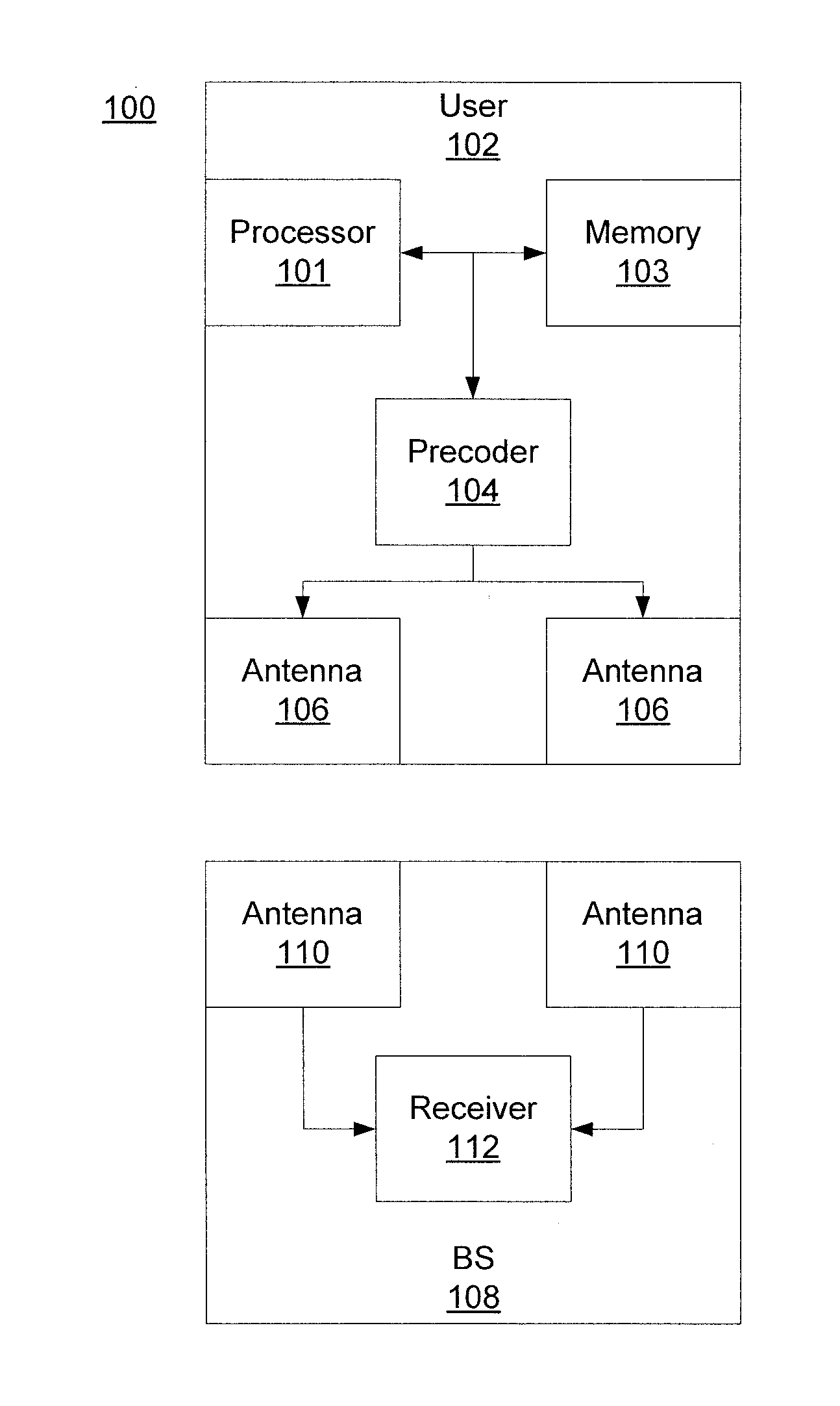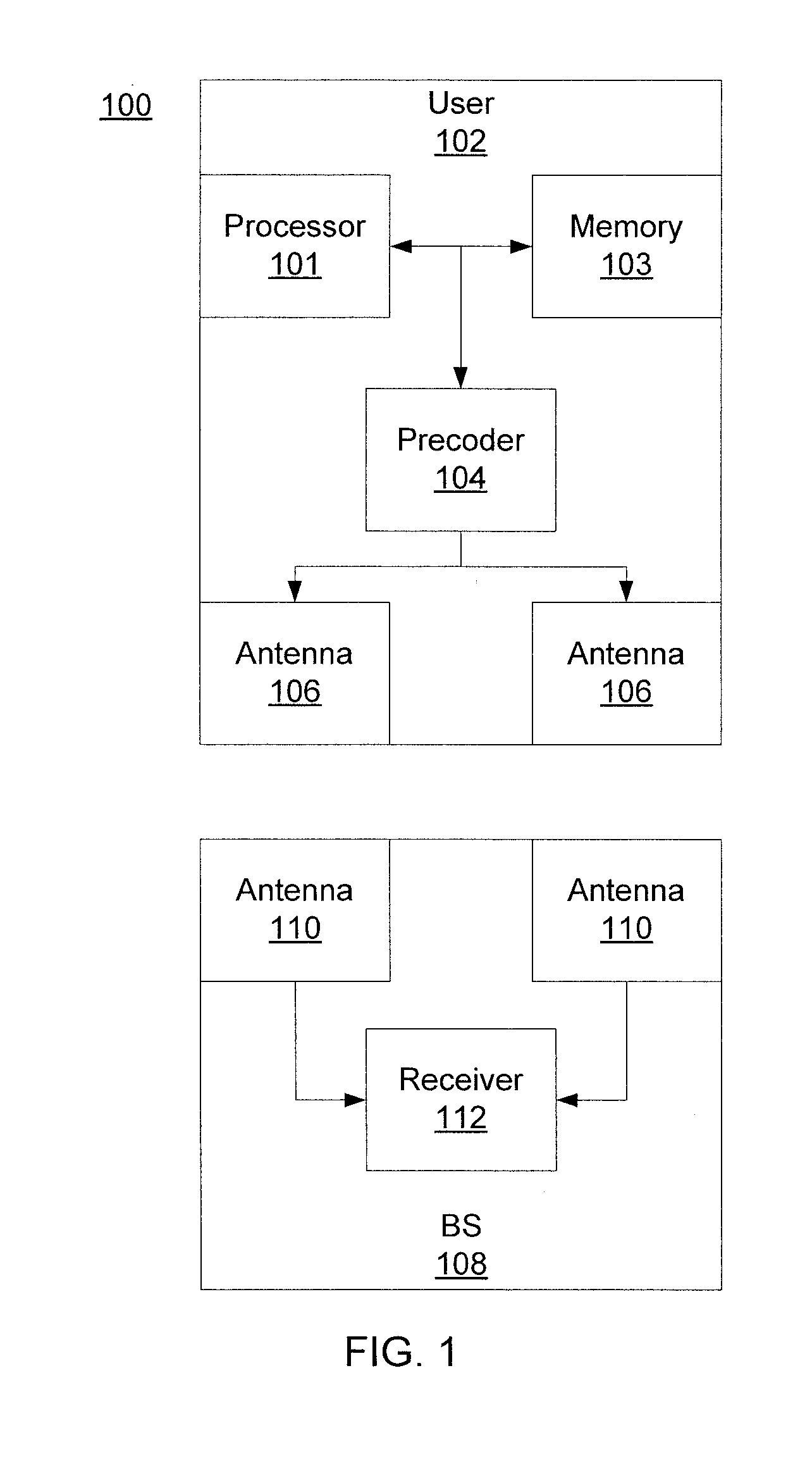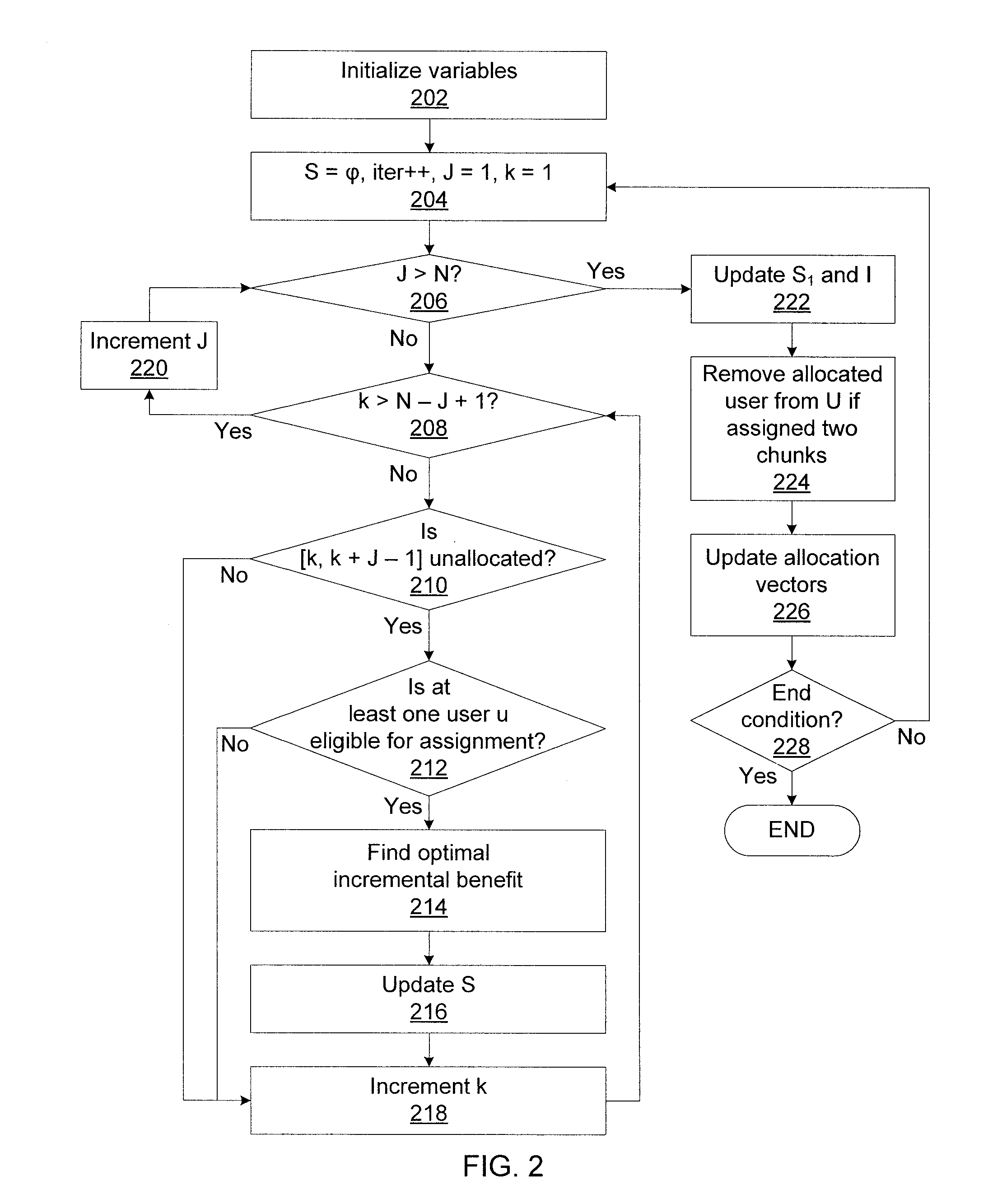Resource allocation in 4g MIMO cellular uplinks
a technology of cellular uplink and resource allocation, applied in the field of wireless communication systems, can solve the problems of lte-a uplink scheduling problem itself known to be np-hard, and neither of these algorithms is applicable to lte-a uplink
- Summary
- Abstract
- Description
- Claims
- Application Information
AI Technical Summary
Benefits of technology
Problems solved by technology
Method used
Image
Examples
Embodiment Construction
[0016]The present principles provide practical uplink resource allocation methods for 4G MIMO cellular uplinks. The term “resource” as used herein refers to subcarriers, modulation and coding schemes (MCS), as well as precoding matrices drawn from finite codebooks. The resource allocation methods for finite modulations (finite constellations) and finite precoding codebooks described herein comply with practical constraints on the assignment of sub-carriers, constellations and precoders to scheduled users. The resulting uplink resource allocation problems in both 802.16m and LTE-A networks are NP-hard. However, the present principles provide constant-factor polynomial-complexity approximation methods for both these problems and provide linear programming (LP) based upper bounds to benchmark the performance of said approximation methods. The present principles also provide rules for efficiently computing per-user signal-to-interference-plus-noise ratios (SINRs) that are used for evalu...
PUM
 Login to View More
Login to View More Abstract
Description
Claims
Application Information
 Login to View More
Login to View More - R&D
- Intellectual Property
- Life Sciences
- Materials
- Tech Scout
- Unparalleled Data Quality
- Higher Quality Content
- 60% Fewer Hallucinations
Browse by: Latest US Patents, China's latest patents, Technical Efficacy Thesaurus, Application Domain, Technology Topic, Popular Technical Reports.
© 2025 PatSnap. All rights reserved.Legal|Privacy policy|Modern Slavery Act Transparency Statement|Sitemap|About US| Contact US: help@patsnap.com



